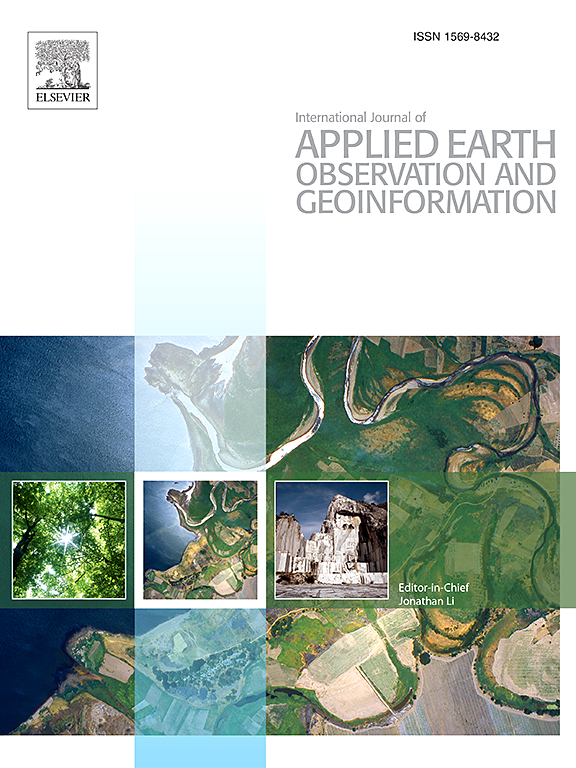Historical habitat mapping from black-and-white aerial photography: A proof of concept for post World War II Switzerland
IF 7.6
Q1 REMOTE SENSING
International journal of applied earth observation and geoinformation : ITC journal
Pub Date : 2025-03-08
DOI:10.1016/j.jag.2025.104464
引用次数: 0
Abstract
Information regarding the spatial arrangement and extent of past habitats is important for understanding present biodiversity, restoration potential, and fighting extinction-debt effects. European landscapes have changed profoundly over recent decades, with the trend accelerating following World War 2. We develop a proof of concept for mapping historic habitat distribution for Switzerland from black and white aerial imagery compatible with the present-day habitat map. Recently available orthorectified 1946 aerial imagery (1 m resolution) was segmented based on spectral and shape characteristics for training areas (320–508 km2) representing the main biogeographical regions of Switzerland. Initial training data was derived by manual aerial orthoimage interpretation differentiating 15 habitat classes. A random forest model was trained to classify the segments using variables describing spectral information, image texture, segment shape, topography, climate, and anthropogenic influence. Classification accuracy was improved with additional training samples derived in a stepwise approach, applying three different sampling techniques. Highest class accuracies (producer’s and user’s accuracies ≥ 0.75) were achieved for the habitats ‘Standing water’, ‘Flowing water’, ‘Glaciers, permanent ice and snow’, and ‘Forests and other wooded land’. Particularly low user’s accuracies were found for ‘Wetlands’, ‘Hedges and tree rows’ and ‘Buildings’. The comparison to independent data further revealed minor differences in overall accuracy for the three different sampling strategies. Yet, map predictions sometimes varied substantially, indicating that the sampling strategies address different classification issues. Hence, we conclude that combining different sampling strategies for training data collection has the potential to improve the mapping, particularly in the case of multi-class classifications.
求助全文
约1分钟内获得全文
求助全文
来源期刊

International journal of applied earth observation and geoinformation : ITC journal
Global and Planetary Change, Management, Monitoring, Policy and Law, Earth-Surface Processes, Computers in Earth Sciences
CiteScore
12.00
自引率
0.00%
发文量
0
审稿时长
77 days
期刊介绍:
The International Journal of Applied Earth Observation and Geoinformation publishes original papers that utilize earth observation data for natural resource and environmental inventory and management. These data primarily originate from remote sensing platforms, including satellites and aircraft, supplemented by surface and subsurface measurements. Addressing natural resources such as forests, agricultural land, soils, and water, as well as environmental concerns like biodiversity, land degradation, and hazards, the journal explores conceptual and data-driven approaches. It covers geoinformation themes like capturing, databasing, visualization, interpretation, data quality, and spatial uncertainty.
 求助内容:
求助内容: 应助结果提醒方式:
应助结果提醒方式:


